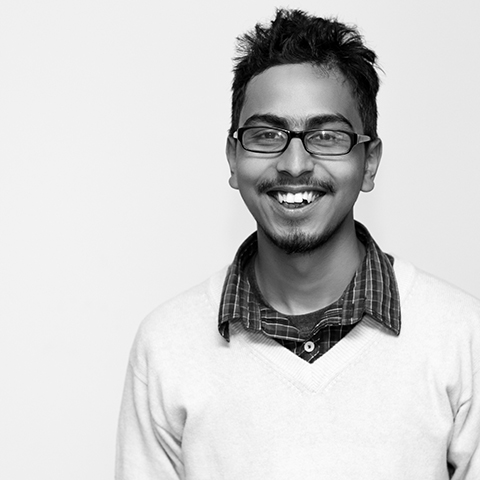Science & Technology
Understanding graphics cards
Deciding which graphics card to invest in can be very confusing.
Prajesh SJB Rana
Video game graphics have gotten more complicated over the years. Games look more and more photo-realistic these days and with added lighting, geometry and anti-aliasing techniques; these games demand a lot out of your systems. In days of yore, all the graphical elements your computer produced would be handled by the CPU itself, in what was called ‘Frame Buffers’, but these days, because of the complexity of modern graphics, a dedicated Graphical Processing Unit (GPU) is assigned the task of all graphical rendering on screen, and these include your operating system’s graphics as well as your hardware accelerated programs. While not only used to render games, graphics cards are also important for a plethora of other applications. For one, these GPUs are extremely useful in cryptocurrency mining. They are also essential in any system used for creative work like graphic design, video editing and 3D modelling. Almost all Adobe Creative Cloud applications support GPU hardware acceleration and work best when paired with a dedicated graphics card.
This doesn’t mean that all the computers come with a dedicated graphics card, many low-end or budget computers usually work with integrated GPUs, these are graphical processing units that are built into the CPU. These GPUs aren’t usually very powerful and usually can’t run many graphically intensive games. Higher end computers will usually have a graphics card installed to ensure better performance on all fronts for the system.
Deciding which graphics card to invest in can be very confusing, as each year top competitors AMD and Nvidia release multiple products. If you’re buying a pre-built system like a laptop or a branded PC, the options for what GPU to install will already be narrowed down to a single choice, but for enthusiasts or people looking to upgrade, the selection process can be quite daunting. With new games demanding DirectX 12 and Ray-Tracing support, a new graphic card is on the wish list of many gamers and enthusiasts alike, which is why we explain graphics cards today.
While GPUs and graphics cards are two terms usually used interchangeably, they’re actually two different things. The GPU is the procession unit only, which means the main silicon die while a graphics card is the whole card with transistors, memory modules and cooling systems. The two major players in the GPU market are AMD and Nvidia. These companies design, fabricate and produce the GPU dies which they usually release with a reference board. The finished graphics card is usually made by third-party chip manufacturers like MSI, ASUS, Zotac and Gigabyte. This is why you will find many different variants of the same graphics cards produced by different manufacturers. While none of these chip manufactures will have a GPU of their own, they will vary in various aspects like cooling systems, the quality of transistors used and out-of-the-box overclocking. For this part of the process, ideally going with the producer you trust the most would be the best bet. Performance-wise, none of these cards will have drastically different feature sets and will generally perform similarly—depending on OC—regardless of the manufacturer. A trusted company will however use good VRAM chips, transistors and well-engineered cooling systems, all of which are very important for the longevity of the card.
The base GPU however, will be built by either AMD or Nvidia. And which model you choose is the primary indication of your graphics card’s performance. Both companies re-engineer and develop new architectures for these GPUs that make them faster than older ones but also more efficient. Newer features like RTX, G-Sync and DLSS are feature sets added incrementally to GPUs. Both companies employ a relatively easy way to understand these specifications for the users. On Nvidia’s side, there is the GTX and RTX lines popular among gamers. GTX are older graphics cards that don’t support newer technologies like DLSS and Ray-Tracing. They’re also obsolete now since Nvidia has moved to the RTX line. RTX series of GPUs are units built with hardware support for Ray-Tracing, a new lighting technique used in a few big games like Cyberpunk, Battlefield and Minecraft. These are the newer cards from Nvidia and each of these cards have a generation and model number attached to their names. The RTX 2060 for example is broken down into 20—the number for the generation—and 60—the number for the model. All the models within the same generation will use the same architecture of GPU with modifications to the unit for higher performance. The higher the last two numbers are, the higher-performing the model. The RTX 2060 will be weaker than the 2080 and vice-versa, and the price will also be similarly reflected on the higher models.
On the AMD side, the GPU naming system hasn’t been all that great. But with the newer series of graphics cards, AMD has implemented a new system that makes it easier. The new RX line has a similar identifying code as Nvidia. The RX 5500 is separated in a similar way, with the first number 5 representing the generation while the 500 represents the model. Competing with Nvidia’s new line of GPUs, the RTX 3000 series is AMD’s 6000 series. Both companies have enhanced versions of their GPUs too. Nvidia used to use TI for the GTX series but has since moved to Super for the RTX; AMD on the other hand used the XT suffix. These are just slightly modified versions of the base model, that results in higher performance, so the best way to look at this would be that a RTX 2060 would perform worse than a RTX 2060 Super, which in turn will still be slower than a RTX 2070. Same on AMD’s side.
Most of these GPU's are also paired with memory modules, which means they usually all have the same amount of VRAM regardless of the manufacturer. But the amount of VRAM is also something to keep in mind while buying a graphics card. VRAM is exactly like the RAM for your CPU, which means that it’s an extremely fast storage unit that caches all the data your GPU will need. Want to play games in higher resolutions, want higher textures in games, editing 4K video, 3D modelling? All of these require a lot of VRAM, so think about what your use case scenario is and make a decision on how much you’d need. Both Nvidia and AMD offer workstation graphics cards too—Quadro for Nvidia and Radeon Pro for AMD. These workstation graphics cards are extremely expensive making it not worth it for gaming. These cards are also specifically designed for graphical workloads like rendering, which is also why the Quadro 8000 has 48GB of GDDR6 memory, a VRAM capacity you would never hit while gaming. An 8GB to 16GB graphics card would be more than enough for modern games.
There are plenty of other specifications too, like the number of CUDA Cores, PCI-e Generations and Memory Bandwidth Speed, but these are all specifications that are important only if you want to dive deep into the specifications. These are mostly important if you want to overclock your GPU, but that requires expertise in itself. Find one that fits within your budget, all RTX 2000 and 3000 series of graphics cards are available on Daraz, Aliteq and Makura Tech online stores. You can find older and used ones on HamroBazar also, but I’d recommend not going below the RTX 2000 and RX 5000 series. Buying a recent generation card is always better for future-proofing, and with the GTX series, gamers will miss out on many important features that are most definitely going to define the future of gaming.




 7.12°C Kathmandu
7.12°C Kathmandu








%20(1).jpg&w=300&height=200)

